Zero or hero? The main fighter of the Japanese fleet
Touching the ground destroyed the Slayer's secrets. Among the wreckage were a Bendinx chassis and a Hamilton Standard propeller, Palmer tires, aviation guns "Oerlikon-FF" and copies of machine guns "Vickers" ...
The Americans did not look further. Another fake, which is a pity to waste time.
No one paid attention to the airframe materials. And he did not attach importance to the fact that wherever possible, the details were drilled to reduce take-off weight.
The experience of military operations in China remained unclaimed. Stereotypes did not allow to study the enemy in advance.
"Linen biplanes will meet you"...
"Reisen" broke them with such force that they remembered forever.
Now a real hunt has unfolded for the wreckage. But over and over again, downed cars carried secrets to the seabed.
Expeditions to the Aleutian Islands were equipped three times. Until one of the deserted beaches noticed the inverted "Reisen" ("Zero") of the A6M2 modification, which became the key to unraveling many secrets of the aircraft designer Jiro Horikoshi.
The free retelling has probably already caused a storm of indignation among everyone who knows story Japanese fighter.
Everything was different.
Enemy technology fell into American hands on the first day of the war. When nine Reisens were shot down over Pearl Harbor. Analysis of the fragments revealed the reason for the excellent flight performance.
They have frames, ribs and, in general, all structural elements drilled!
The longer they looked, the stronger was the amazement. They were dealing with an apparently odd enemy.
Drilling out parts no longer seemed like a chore compared to thousands of countersunk head rivets. The Japanese did not hesitate to spend time on this method of fastening parts, in order to ensure the perfect smoothness of the skin.
Hard work as a consequence of progressive schizophrenia. Or, if you please, following the national tradition to bring all the lines, down to the last stroke, to perfection.
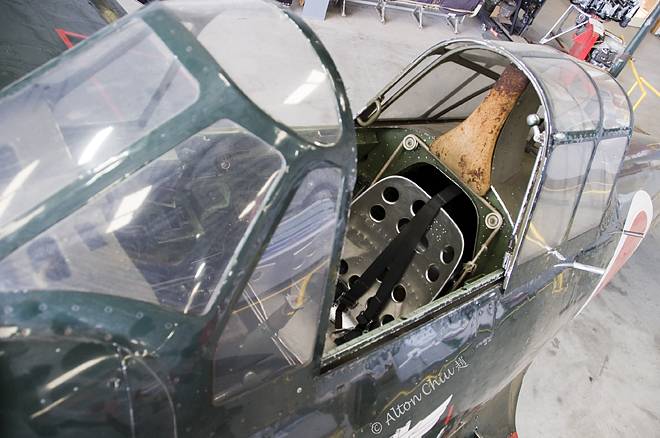
Pilot's seat
The implementation of the idea of a superlight fighter required more significant arguments.
This is a complete integration of the power set of the wing and fuselage. In which the root part of the wing was integral with the central part of the fuselage and the cockpit.
And aluminum alloy from the Sumimoto company, which surpassed all known analogues in strength.
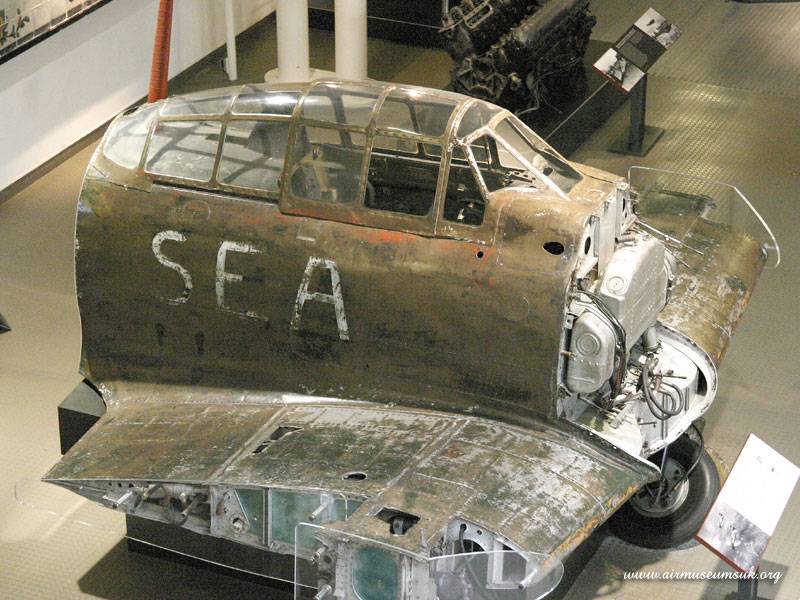
Thus, hundreds of kilograms of take-off weight were saved. And the integration of the wing added rigidity to the entire structure. It remained to implement the plan in terms of mass production.
The Japanese were not embarrassed by the number of work shifts that went into the manufacture of each such unit. The main difficulties of production were associated with the eternal shortage of materials, fuel and raw materials.
The Americans gave Reisen a well-deserved rating - uilt like a fine watch, like a Swiss watch.
It is surprising that with all the intricacies of the design, the volume of production of Mitsubishi A6M fighters amounted to 11 thousand units. Which is decent even by the standards of World War II.
Acquaintance with the Reisen device was a very entertaining affair, but devoid of practical meaning. No one, following the example of the Japanese, was going to lighten the planes like that.
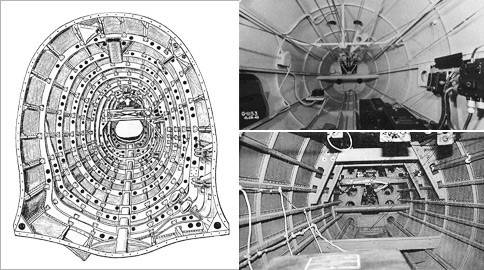
Reisen, Wilcat and Hellcat fighter power pack
The Yankees continued to overlap the skin, almost two layers. Waiting for the aviation industry to introduce 2000-horsepower fighters capable of out-flying any Zero. Such as the famous "Corsair". The winner of the competition for a carrier-based fighter from 1938, a little late for the start of the war. The operational readiness of the first squadron of carrier-based F4U-1s was announced in December 1944.
In 1942, they had to fight, using the crumbs of the advantages that the clumsy F4F Wild Cat had. At that time - the main fighter of the US Navy.
Then it was time for the Akutan Zero, which, after repairs, was able to take to the air. So it became known about the two Achilles heels of the fighter.
The low specific load on the wing was not expected to be a boon at high flight speeds. Piloting "Zero" at high speed concealed a lot of inconvenience.
But the most valuable discovery was the archaic fuel system of the engine. Which could lose performance in a steep dive. This should be used in combat. On horizontal turns, Reisen was invincible.
Miracles ended when rolling out the gates of the shops
The combat units received a practical combat aircraft that met all the points of the "impossible" technical assignment of 1938.
Two hours in combat mode and six hours when flying at cruising speed. Cannon weapons. bombs. Oxygen equipment for high altitudes. Mounts for hanging tanks. Speed not less than 500 km/h and maneuverability at the level of biplanes of the 30s.
Japanese pilots are often portrayed as fanatical suicides. Not even guessing what things were hidden under the Reisen's skin. For example, inflatable balloons and an air supply system are a tribute to the maritime vocation of a fighter. He tried to be useful to the end. Even with a forced landing on the water.
The wingspan of the Reisen could not exceed 12 meters. This was the size limit for the lifts of aircraft carriers. The carrier-based fighter required a stable chassis without fail. And its design had to endure the presence of a landing hook, games with folding wingtips and other tricks of carrier-based aviation.
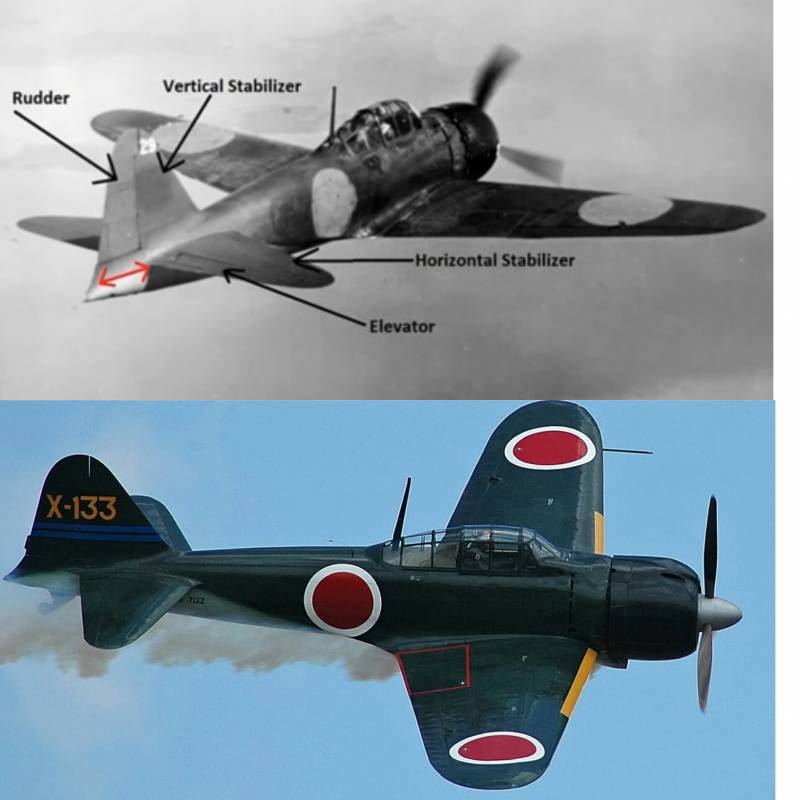
One of the mysteries and features of the Reisen is the position of the horizontal stabilizer. The only case of this among all serial fighters of the Second World War.
All conditions were achieved without mockery of those who operated the "Reisen" and prepared it for sorties.
Excellent visibility: forward - thanks to the short engine hood; and back - thanks to a drop-shaped lantern. No one held the fighter by the tail while taxiing (like the legends of the Spitfire).
The combat units did not know anything about overheating engines or "surprises" during the landing. In contrast to the Messerschmitts and Spitfires, where the narrow gauge of the main landing gear led to so many accidents and problems.
This is to how concise the Japanese supercar turned out.
Everything complicated was made simple. And the traces of the incredible efforts of the creators were forever sealed in cold metal. The employees of the aviation units should not have known about these difficulties.
The only thing that Reisen did not tolerate was rough walking on the wing. Which could have caused the artfully assembled skin to warp. By pressing the lever, the steps leading to the cockpit were extended from the fuselage.
Where it made sense, the designers did not hesitate to use proven foreign solutions. Therefore, “among the wreckage lay a Hamilton Standard propeller, Palmer tires, Sperry and Pioneer aircraft instruments.
Armament was also licensed.
The Japanese were not satisfied with the ammunition load of the Swiss Oerlikon-FF air cannons (the Messerschmitt-109 of modification “E” had similar weapons). By the beginning of 1941, Japanese fighters acquired increased ammunition - 100 instead of the previous 60 shells per barrel.
And the "Reisen" did not have body armor.
The two-ton aircraft was suddenly frightened by the presence of 20 kg of armored back
The initial rejection of any means of increasing survivability was the result of the same Japanese schizophrenia.
Opinions of people who polished rivets. In an effort to lighten the plane, they crossed the boundaries of reason and were carried away by frankly useless methods.
By the middle of the war, everything returned to its place.
Barely noticeably heavier "Reisen" remained a master of air combat. A complete set of protective measures, characteristic of other fighters of the era. Armored glass windshield, 8 mm pilot's seat back and protected tanks with carbon dioxide fire extinguishing system.
Like any star-powered fighter, the Reisen had superior survivability over aircraft whose engines had a vulnerable water-cooled jacket. Air-cooled motors remained operational even in cases of shot through cylinders.
The 14-cylinder star "Nakajima-Sakae" itself, with a diameter of more than a meter, served as an additional "shield" for the cockpit.
Only one mention of an air-cooled engine logically refutes statements about the insignificant survivability of the Reisen.
It is not possible to assess the negative consequences due to the lack of armored backs (and especially protected tanks).
In the real conditions of 1941-1942, the Reisen confidently seized air supremacy. When the protective equipment was returned to its place, this did not affect the position of Japanese aviation in any way.
The protracted war opened the way for new heroes. "Kavanishi Shiden" ("Purple Lightning"), "Hellket", "Corsair". More powerful. Faster. But none of them showed such an impressive superiority over their peers, as the "Reisen" did in its time.
The main advantage of "Zero" - he had time for his war
To a war in which the quality of manufacture and the combat characteristics of individual aircraft mattered on the scale of large operations.
By December 1941, Reisen fighters were equipped with the air wings of six aircraft carriers sent on a raid on Hawaii. Others froze on airfields in Taiwan, ready to take off and unleash wing-cannon fire on American positions in the Philippines.
They have fulfilled all their roles. Taking off from dusty airfields and rocking decks of aircraft carriers. Air combat, interception, long-range escort, sorties to attack ground targets.
Ancient samurai swords had one-sided blades, and this was truly double-edged weapon.
All the military glory of the Japanese remained forever associated with the Reisen (Zero) era. Together with the memory of the allies of their desperate situation at the beginning of the war.
The main drawback of the "Reisen" was the prolonged agony in the role of the main fighter fleet. The Americans who came to their senses got three whole years to "get even" with him on all counts. For all the insults caused and the awkward situation of 1941-1942.
It is worth noting that a similar fate befell many types of combat aircraft of the Axis countries.
Zero had enough reason to become a legend even at the beginning of his military career. And everything else in that story didn't matter. The most advanced fighter of 1941-1942.
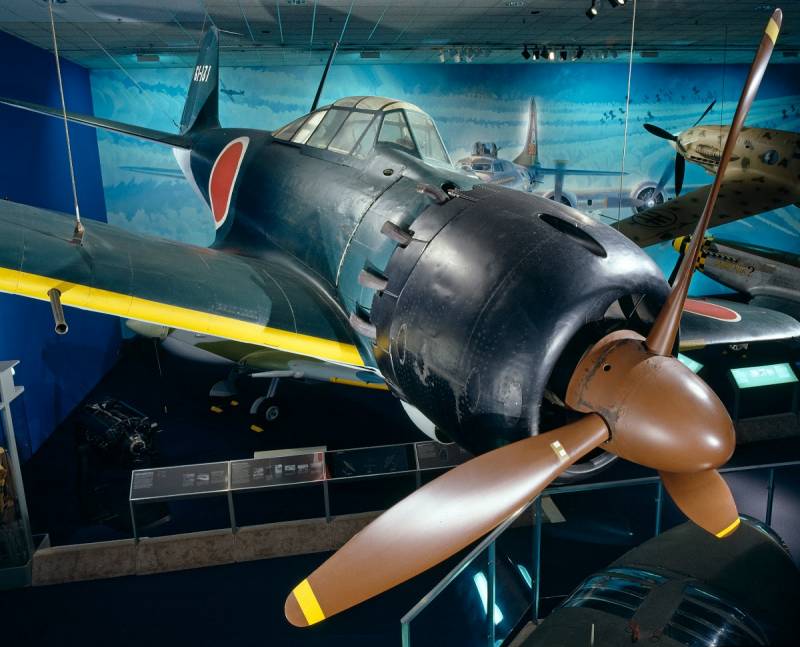

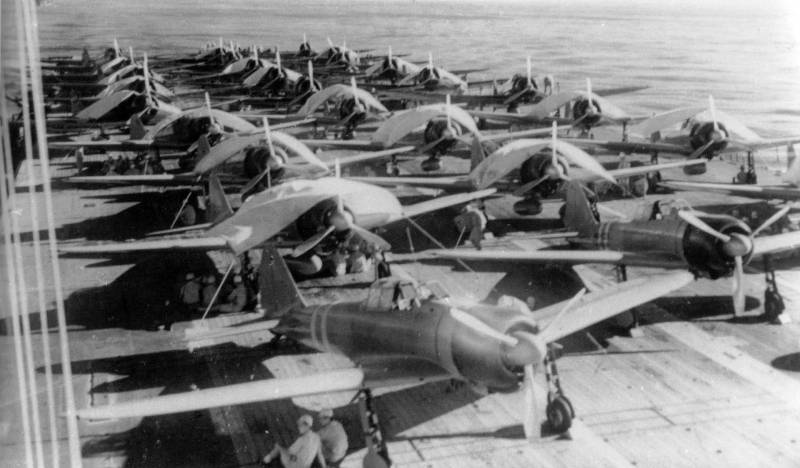
Information